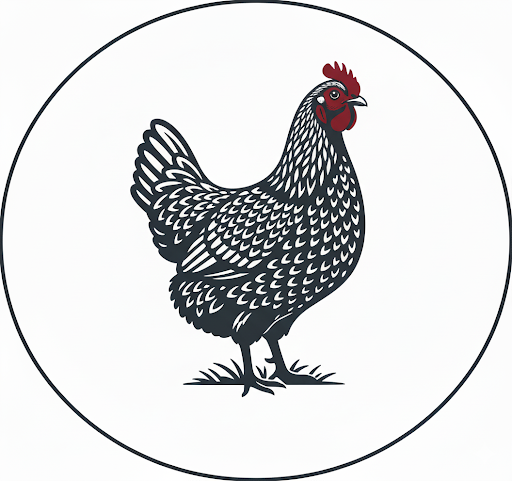Barnevelder mixology - I unravel the breeds that were used to create these amazing dark egg chickens
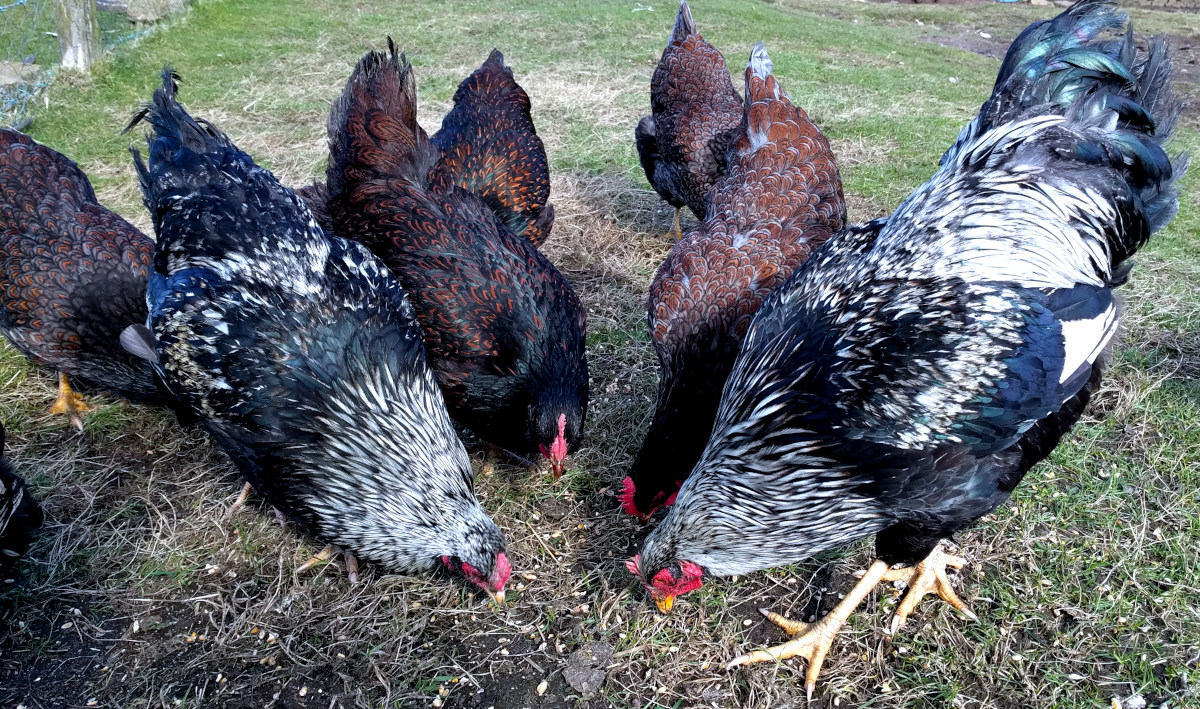
The Barnevelder chicken breed was developed in the Netherlands, specifically in the town of Barneveld, during the late 19th and early 20th centuries. It was created by crossing several imported Asiatic breeds with the local farm chickens to produce a hardy, dual-purpose chicken known for its attractive plumage and good brown egg-laying abilities.
Table of Contents
In the course of my breeding program I have made use of the Laced Wyandotte as a silver donor for lacing and a Barred Rock to improve leg colour.
Farmers, spurred on by the high prices paid for brown eggs in the UK, wanted a chicken that laid plenty of eggs and tasted good on the dinner table. They started mixing breeds in the late 1800's, and by 1910, they had a winner. Although at this stage the only thing that was standard about the breed was the large dark brown egg.
Below: The real reason the Barnevelder came about.
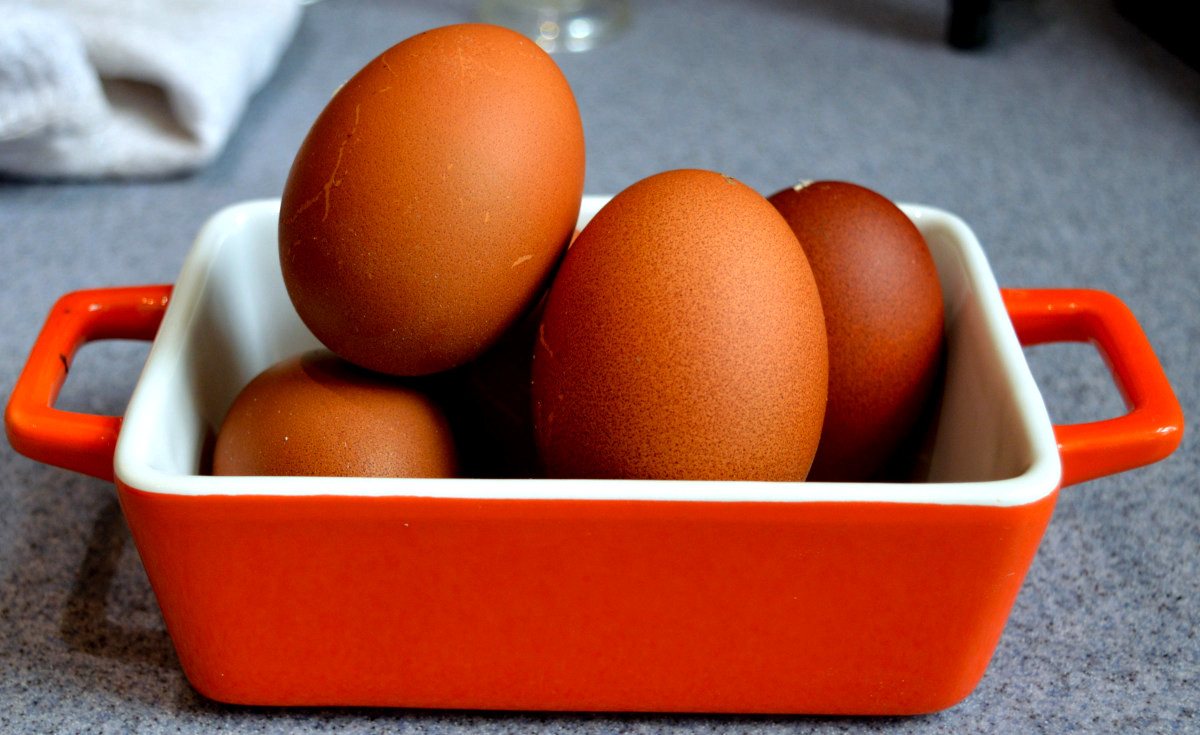
Breeds we know contributed to the makeup of the Barnevelder:
While the exact combination of breeds used in its development isn't fully documented due to the organic and somewhat informal nature of its creation, poultry historians generally agree that the following breeds contributed to the Barnevelder:
Local Dutch Chickens: Indigenous Dutch farm chickens formed the foundation, providing adaptability to the local climate and conditions. These local fowl would have been hardy and well adapted to northern European winters.
Brahma: This large, feathered-leg breed from India likely contributed to the Barnevelder's size, hardiness, and some of its feather patterns.
Cochin: Another heavy breed, the Cochin, originally from China, was likely used to enhance the Barnevelder's plumage and body structure.
Langshan: This breed, also of Chinese origin, may have been introduced to improve egg production and add to the dark egg colour that Barnevelders are known for. The Langshan played its part in the make-up of the breed is undoubtedly very true. This is the breed that in England at one time laid real coffee-coloured eggs.
Specimens of Barnevelders still manifest plain enough signs of Langshan blood in their back-breeding including feathered shanks and feathers on hocks and between the toes. This is a defect I still see occasionally in my own flock.
Wyandotte : Some sources, including me, suggest that Wyandottes, an American breed, might have been crossed in later stages to refine the laced feather pattern seen in some Barnevelder varieties.
Below: This is the exact trio of Silver Laced Wyandottes I used in breeding my Silver Laced Barnevelders bantams.
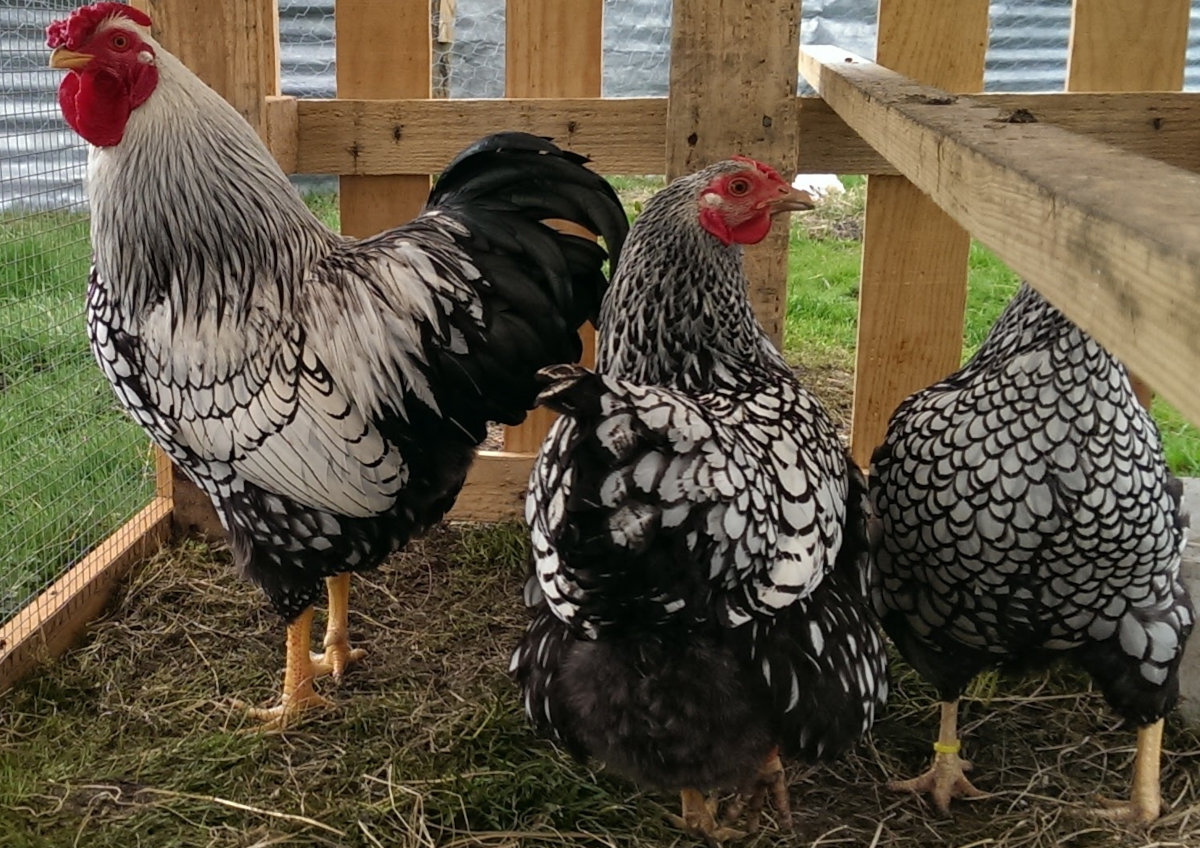
Breeds that might have been used:
The Malay may have influenced the Barnevelder's stance, posture and brought yellow legs into the mix. Evidence for the Malay being part of the Barnevelder makeup is sketchy and circumstantial, it being imported into the region around the same time as other Asiatic species.
Below: These wonderful yellow legs came courtesy of the barred rock and 11 years of hard work on my part.
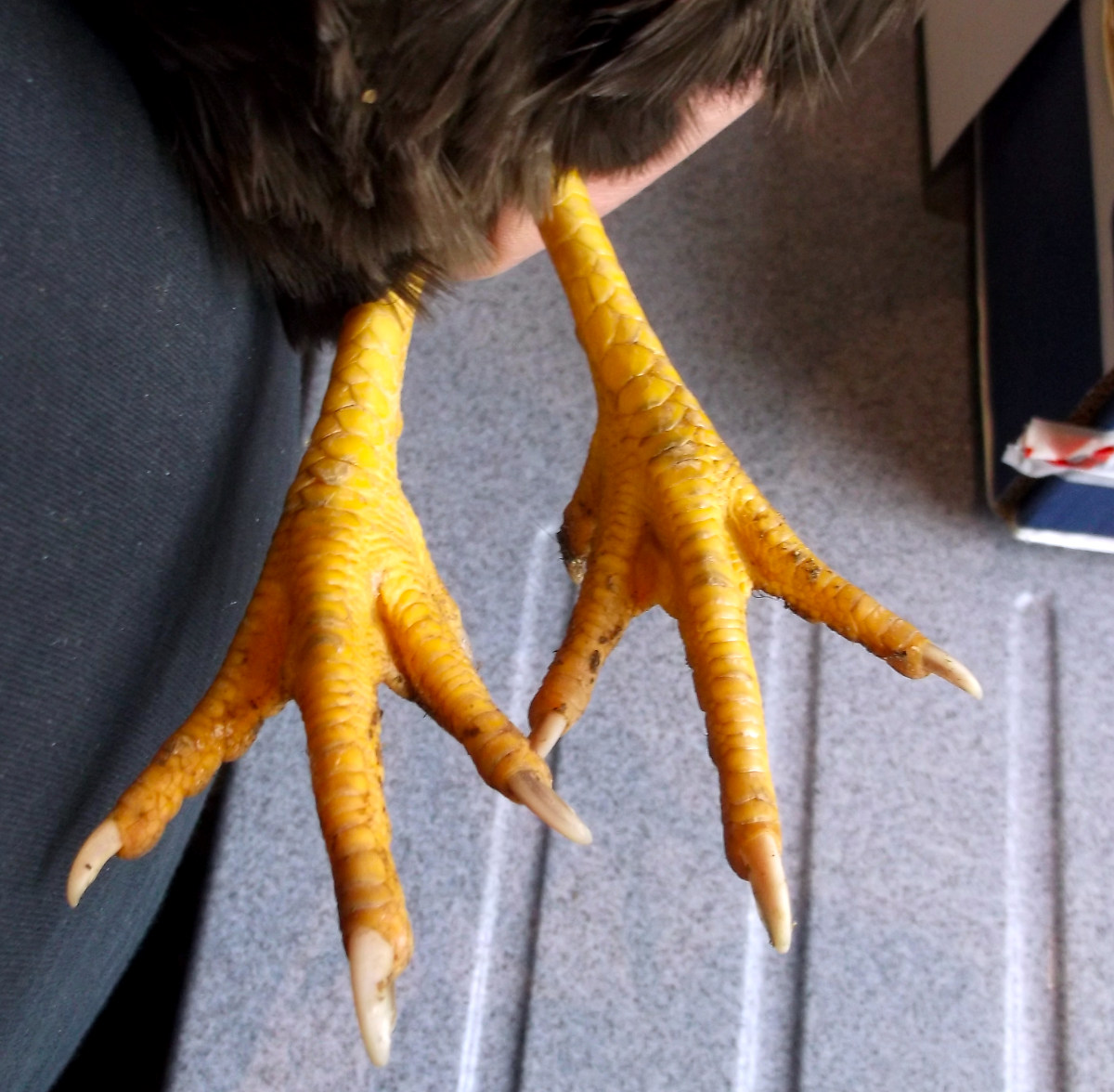
The Orpington is another breed that has been suggested. In his book from the 1930's W. Powell-Own said "One might have thought that Buff Orpington introduction would have also brought along broodiness, yet it has been one of the most noticeable features in the breed since the importation here for Barnevelder females to be completely or almost non-broody."
My interpretation of his statement is that it wasn't a part of the breeding.
The Plymouth rock was used in the later creation of the barred auto-sexing Barnevelder.
Breeds that were not used to breed the Barnevelder:
I do know that the Indian game was not used in the makeup of the Barnevelder. For this history we are indebted to Messrs. VVijk and Ubbels, from the paper read by them at the World’s Poultry Congress, 1930. Therein they add:
"The colour and pattern of the feathers shows some similarity to that of the Indian Game Cock, although this breed has not been used in the creation of the Barnevelder. The males, however, have a seamed neck. In breeding regard is paid, in the first place, to a large number of large brown eggs, and only in the second place to the colour of the feathers."
Local Dutch chickens gave it roots. Brahmas added brawn. Cochins brought fluff. Langshans gifted egg magic. Wyandottes sprinkled some colour. Together, they created a breed that’s tough, beautiful, and oh-so-productive.
